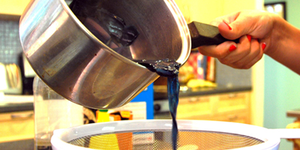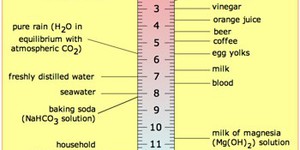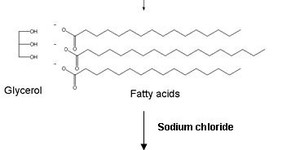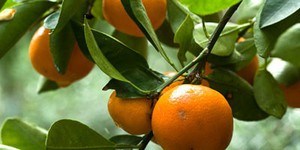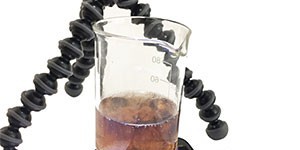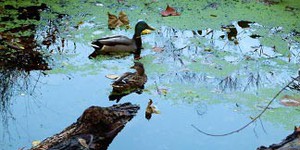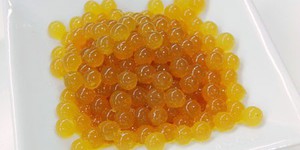Others Like “Measuring the Amount of Acid in Vinegar by Titration with an Indicator Solution” (top 20 results)
|
This is a simple "kitchen chemistry" project about acid/base chemistry. Scientists measure the acidity or alkalinity of a solution using a logarithmic scale called the pH scale. In this project you'll learn about the pH scale, and you'll make your own pH indicator paper using a pH-sensitive dye that you'll extract from red cabbage. You can use your pH paper to measure the acidity/alkalinity of various household solutions.
Read more
Lead is a very hazardous element. Even very small amounts can cause health problems, especially in babies and young children. One way to determine if a household item, such as a toy or a piece of jewelry, contains lead is to soak the item in a solution, and then test the solution for lead that might have leached out of the item. The goal of this chemistry science fair project is to determine how varying the pH of the test solution affects its ability to dissolve lead, which is a critical step…
Read more
You have probably heard the saying that "water and electricity don't mix." Well, in this chemistry science fair project you will mix them, to create two solutions, one basic and one acidic. The apparatus is very simple, but the chemistry is complex and offers many avenues for exploration.
Read more
Which type of orange juice has the most vitamin C? In this science project, you will learn how to measure the amount of vitamin C in a solution using an iodine titration method. You will compare the amount of vitamin C in three different types of orange juice: homemade, premium not-from-concentrate, and orange juice made from frozen concentrate. Which do you think will have the most vitamin C?
Read more
Soap comes in many varieties and forms—from bars to bottles to boxes. The uses for soaps are just as expansive—from cleaning our hands, hair, and faces to a variety of household cleaning jobs, such as dishes or laundry. One thing all these different soaps have in common is their chemical origin; they were all made by mixing fat or oil with a strongly basic solution, such as lye. In this chemistry science project, you will carry out the chemical steps needed to transform coconut oil…
Read more
The oceans are a precious natural resource, part of Earth's carbon cycle. But what happens if the oceans absorb too much carbon dioxide? Many scientists are concerned that the increased absorption of carbon dioxide is causing them to become more acidic. What impact does that have on the marine life? In this ocean science fair project, you will demonstrate ocean acidification and investigate the effect on the shells of marine life.
Read more
Are oranges highest in vitamin C when they are fresh from the tree (or, in a pinch, the grocery shelf)? Does the amount of vitamin C in an orange change over time, after it has been picked? In this science project, you will find answers to these questions by measuring the amount of vitamin C in a solution using an iodine titration method.
Read more
Have you ever seen a chemical reaction that makes a solution change color? Probably. But what about a solution that changes color and then changes back, not only once, but many times? Sounds pretty exotic! Whereas most chemical reactions only move in one direction from reactants (starting chemicals) to products, in these rare oscillating reactions, the reaction products appear and disappear for a number of cycles. Because the products are colored, the solution appears alternately blue, then…
Read more
Chemicals from Earth's atmosphere are making their way down to the planet! Not in spaceships, but in rain. The acid rain can infiltrate ground water, lakes, and streams. How does acid rain affect aquatic ecosystems?
Read more
Forget drinking your juice. Instead, try snacking on it! Use the steps and recipes in this food science project to transform drinks into semi-solid balls that pop in your mouth. The technique is called spherification and it is part of a larger food science trend called molecular gastronomy— but we just call it yummy science!
Read more
|
Explore Our Science Videos
Racing Drones: Does Practice Make you Faster?
Squishy Circuits Introduction
Flower Dissection – STEM Activity


